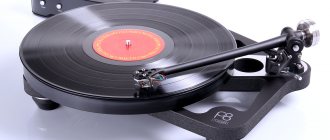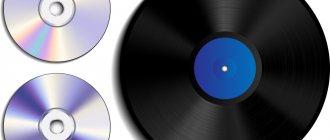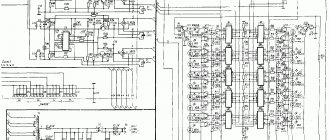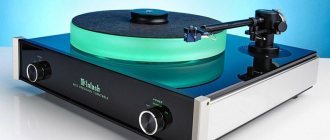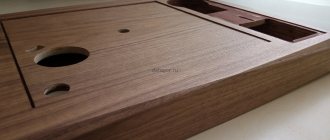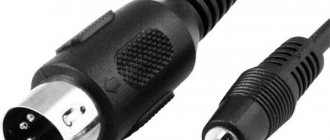It's easier than you think
Connecting a turntable to an AV receiver doesn't have to be a complicated process. All you need to know is a few basic principles for connecting them and then you can enjoy the “enchanting sounds” of vinyl records.
The key to connecting these two components starts with the phono stage (phono preamp).
What is a phono stage?
When the stylus tracks the grooves on vinyl records, the cartridge mounted on your turntable's tonearm generates extremely little voltage. This voltage or music signal must be properly processed and amplified before it can be reproduced by your receiver.
A phono stage, also known as a phono preamp, phono equalizer, RIAA preamp, or turntable preamp, is responsible for boosting this signal. And just in case you were wondering, “phono” is short for “phonograph,” an old-fashioned term for turntables.
Where is your phono preamp located?
The three most common places to look for a phono preamp in most systems are:
- inside an AV receiver or amplifier
- built into player
- housed in a separate housing that connects between the player and receiver
Once you know where your phono stage is, the rest is very simple. Below we'll look at the three main ways to connect most players to AV receivers.
System 1: The phono stage is in the receiver
- This record player does not have a built-in phono stage.
- The receiver has a built-in phono stage and an input labeled “PHONO”.
- All you need to do is connect your turntable's audio signal to the AV receiver's phono input.
- Below the “PHONO” input there is a metal terminal labeled “GND” for grounding. Connect your turntable's ground wire (if equipped) to this terminal. This helps prevent any "hum" or noise coming from your player running on your system.
Vinyl player rating
Among all the variety presented on the market, the following models are very popular:
- Audio-Technica AT-LP120-USBHC
. The original design creates a deep and full-bodied sound. - Crosley Cruiser Deluxe CR8005D
. The model is stylized as an old vinyl record player. The case looks like a suitcase covered with fabric. - Technics SL-1210GR
. A universal model with the optimal combination of quality materials and playback of melodies. - Rega Planar 1
. Ideal for new and old records. It is possible to adjust the offset angle. - Ion Max LP turntable
. The optimal combination of musical characteristics and interesting design. A set of replacement needles is included. - Pioneer PL-30-K
. Budget-friendly design with acceptable sound quality. The control is fully automatic. - Sony PS-HX500
. New model with built-in ADC. It is possible to archive records.
System 3: Phono stage is a separate component
- Neither the AV receiver nor the turntable has a built-in phono stage.
- For this system, a separate external phono stage must be connected between the turntable and the AV receiver.
- Start by connecting the turntable's audio cable to the phono input signal. Be sure to connect the turntable's ground wire (if equipped) to the ground terminal on the phono amplifier.
- Now connect the "Phono Preamp" audio output to one of your AV receiver's analog audio inputs, connect the phono preamp to its power supply, and you're all set.
What if your turntable and receiver already have built-in phono stages?
If you find that your AV receiver and turntable have a built-in phono preamp, be sure to connect the turntable to one of your AV receiver's Line In (or AUX) inputs, not the Phono input. You don't want two phono preamps trying to operate at the same time.
Tips for improving sound
If your AV receiver and turntable have built-in phono preamps, and your turntable has a switch that allows you to bypass or disable the built-in phono preamp, you can experiment to see if your AV receiver or turntable's built-in phono preamp sounds better. You may find that one phono stage sounds significantly better than the other.
Even if your receiver has a built-in phono preamp, a separate phono preamp can still improve the sound. External phono preamps often contain high-quality electronic circuitry and have adjustments and settings that can help provide better sound.
Get rid of wires with a Bluetooth player
Some turntables come with built-in Bluetooth for wireless connection to Bluetooth speakers, headphones, or AV receivers.
Expert advice for your system
Setting up a player and connecting it to your system can seem a little intimidating if you've never done it before. We are here for you - every step of the way.
Our consultants can help you choose the right player and AV receiver, and our technical phone support is available seven days a week to answer questions after your purchase.
Types of vinyl players
Currently, several classifications of devices for records are known. According to functional differences, a vinyl player can be:
- with fully manual control;
- semi-automatic;
- auto;
- full automatic.
Electric turntables are divided into:
- belt;
- roller;
- straight;
- combined;
- worm.
Division by tonearm type:
- rotary (radial);
- tangential.
System 1: The phono stage is in the receiver
- This record player does not have a built-in phono stage.
- The receiver has a built-in phono stage and an input labeled “PHONO”.
- All you need to do is connect your turntable's audio signal to the AV receiver's phono input.
- Below the “PHONO” input there is a metal terminal labeled “GND” for grounding. Connect your turntable's ground wire (if equipped) to this terminal. This helps prevent any "hum" or noise coming from your player running on your system.
How to polish the cover of a vinyl record player?
There are several known methods for restoring the plastic surface of a vinyl record player. Polishing of plastic after preliminary preparation is carried out in the following ways:
- Manual
. This is done using GOI paste. Apply the composition with felt in a circular motion without pressure. Then carefully remove with a damp cloth. - Treatment with polish
. The product is applied in an even layer. Rub well with a special cloth. If necessary, the manipulations are repeated in certain places. - Polishing machine
. A professional tool that requires careful preparation of the base. At the last stage, a special paste is used. The gloss is obtained using a foam attachment.
System 3: Phono stage is a separate component
- Neither the AV receiver nor the turntable has a built-in phono stage.
- For this system, a separate external phono stage must be connected between the turntable and the AV receiver.
- Start by connecting the turntable's audio cable to the phono input signal. Be sure to connect the turntable's ground wire (if equipped) to the ground terminal on the phono amplifier.
- Now connect the "Phono Preamp" audio output to one of your AV receiver's analog audio inputs, connect the phono preamp to its power supply, and you're all set.
What if your turntable and receiver already have built-in phono stages?
If you find that your AV receiver and turntable have a built-in phono preamp, be sure to connect the turntable to one of your AV receiver's Line In (or AUX) inputs, not the Phono input. You don't want two phono preamps trying to operate at the same time.
Tips for improving sound
If your AV receiver and turntable have built-in phono preamps, and your turntable has a switch that allows you to bypass or disable the built-in phono preamp, you can experiment to see if your AV receiver or turntable's built-in phono preamp sounds better. You may find that one phono stage sounds significantly better than the other.
Even if your receiver has a built-in phono preamp, a separate phono preamp can still improve the sound. External phono preamps often contain high-quality electronic circuitry and have adjustments and settings that can help provide better sound.
Get rid of wires with a Bluetooth player
Some turntables come with built-in Bluetooth for wireless connection to Bluetooth speakers, headphones, or AV receivers.
How turntables are traditionally connected
Turntables are often connected to external speakers, such as a soundbar, via an amplifier between the turntable and the speaker system. An amplifier is an important component when connecting these two devices if you want to achieve maximum sound quality.
What is a phono stage?
A phono stage—also called a phono stage, turntable preamp, or phono preamp—is an electronic circuit that adds the correct gain to the signal received from the cartridge. It sends the signal to the audio system or to the input of a power amplifier of the appropriate level.
Without a phono stage, the audio signal received from the stylus tends to be shallow, and often requires an amplifier to bring it up to the standard line level (also known as AUX) that modern speakers often require. You can read more about preamp setup here.
It provides the connection between the amplifier and the turntable and then converts the phono stage to line level.
If you need to buy a phono stage, you can buy one on Amazon. Check the price here.
Active (powered) speakers
As an alternative to the traditional route of using an amplifier between external speakers and the turntable, you can choose external speakers with an amplifier. Powered speakers have a built-in amplifier, which is usually powered by an external charger.

